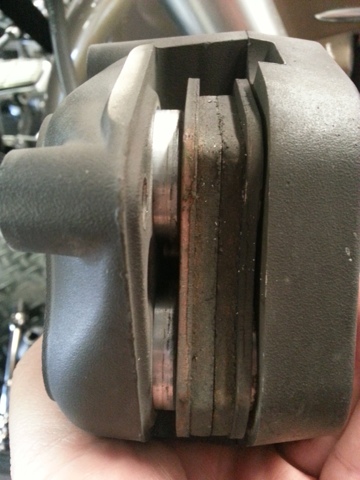Legal Disclaimer
This Agreement is entered into and performed in the State of Texas, United States of America. It is governed by and shall be construed under the laws of Texas.
Users shall not view, use, download, export or copy any content of this site except as provided for in the site. Blue Collar Bike Werks will prosecute Copyright Infringement to the full extent of the law.
All access to the Web site is voluntary and at the sole risk of the user. Blue Collar Bike Werks does not warrant the accuracy of any materials on the site or any other sites linked to or from it. Whereas Blue Collar Bike Werks strives to present timely and accurate information, it makes no representations that this information is free of errors or omissions that may be considered material. Blue Collar Bike Werks will not be liable for any decision made or action taken in reliance upon the information provided on the Web site, except for information, products or services clearly and specifically identified as being supplied by Blue Collar Bike Werks, Blue Collar Bike Werks does not endorse any products or services this Web site or other Web sites linked to or from it.
Information provided on Blue Collar Bike Werks Web site is not targeted to users in any particular locality nor is it intended to constitute the doing of business in any jurisdiction. This Web site is a service provided by Blue Collar Bike Werks and does not constitute any contact with any jurisdiction outside the State of Texas. Use of the Web site is prohibited in any jurisdiction having laws that would void this Agreement in whole or essential part or which makes accessing the Web site illegal. Users in such jurisdictions visit and use the Web site entirely at their own risk.
If you contact Blue Collar Bike Werks and request information about our products or services, we will use your email or postal address only to provide the information you requested. Providing information to us is voluntary and the information we collect is used only for the purpose for which it was collected. We do not share your information without your authorization or unless we are required to do so by law. If you do not wish to submit your information electronically, please telephone us at 830-237-3009.
Blue Collar Bike Werks provides links to other Web sites that provide information or services which may be of help to you. Blue Collar Bike Werks provides these links for your convenience only. It is not responsible for the content of these sites or the programs, agencies, or businesses they describe. Blue Collar Bike Werks does not guarantee that these sites will meet your particular purposes.
Users shall not view, use, download, export or copy any content of this site except as provided for in the site. Blue Collar Bike Werks will prosecute Copyright Infringement to the full extent of the law.
All access to the Web site is voluntary and at the sole risk of the user. Blue Collar Bike Werks does not warrant the accuracy of any materials on the site or any other sites linked to or from it. Whereas Blue Collar Bike Werks strives to present timely and accurate information, it makes no representations that this information is free of errors or omissions that may be considered material. Blue Collar Bike Werks will not be liable for any decision made or action taken in reliance upon the information provided on the Web site, except for information, products or services clearly and specifically identified as being supplied by Blue Collar Bike Werks, Blue Collar Bike Werks does not endorse any products or services this Web site or other Web sites linked to or from it.
Information provided on Blue Collar Bike Werks Web site is not targeted to users in any particular locality nor is it intended to constitute the doing of business in any jurisdiction. This Web site is a service provided by Blue Collar Bike Werks and does not constitute any contact with any jurisdiction outside the State of Texas. Use of the Web site is prohibited in any jurisdiction having laws that would void this Agreement in whole or essential part or which makes accessing the Web site illegal. Users in such jurisdictions visit and use the Web site entirely at their own risk.
If you contact Blue Collar Bike Werks and request information about our products or services, we will use your email or postal address only to provide the information you requested. Providing information to us is voluntary and the information we collect is used only for the purpose for which it was collected. We do not share your information without your authorization or unless we are required to do so by law. If you do not wish to submit your information electronically, please telephone us at 830-237-3009.
Blue Collar Bike Werks provides links to other Web sites that provide information or services which may be of help to you. Blue Collar Bike Werks provides these links for your convenience only. It is not responsible for the content of these sites or the programs, agencies, or businesses they describe. Blue Collar Bike Werks does not guarantee that these sites will meet your particular purposes.

























